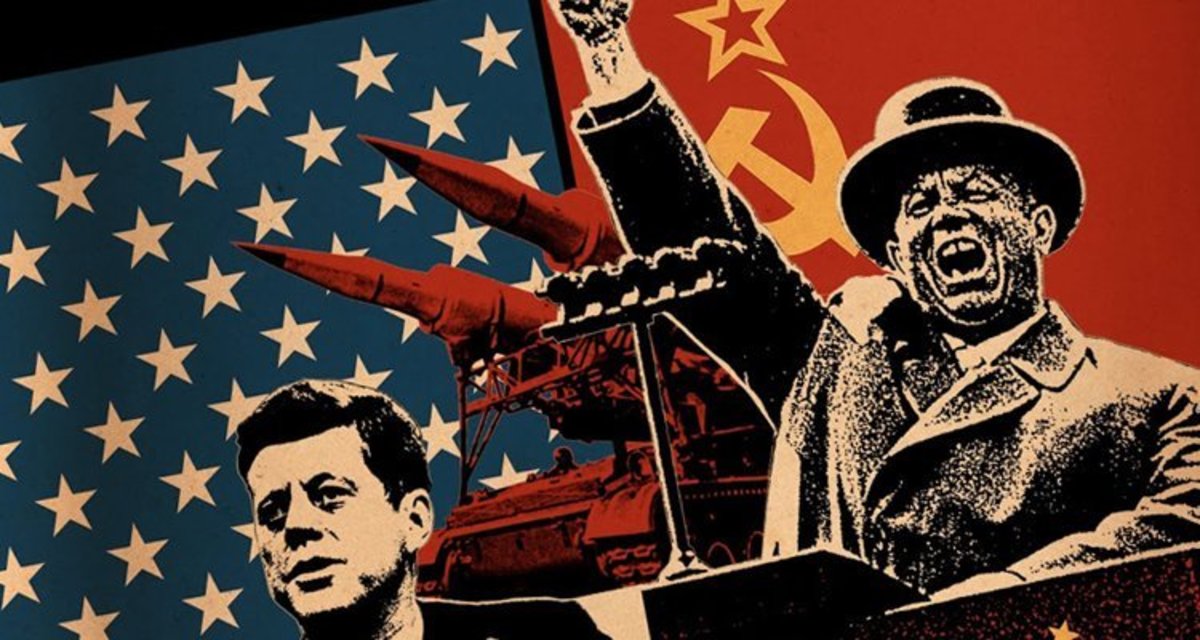
The Cold War Explained
https://youtu.be/XDrykOhrb5s
The 20th century witnessed a clash of titans, an ideological showdown that cast a long shadow on history: the Cold War. Its roots trace back to the fiery embers of Karl Marx's communist ideals, promising a new world order built on equality and worker solidarity. This ideology took root in the fertile ground of post-WWI Europe, giving rise to the Soviet Union, a new superpower guided by the red star.
But as the Second World War ravaged the globe, an unlikely alliance forged between capitalist democracies and the communist state. Faced with a common enemy, they joined forces to defeat the fascist darkness. Yet, even as the dust settled, new tensions simmered. The dream of a unified world fractured like a cracked mirror, reflecting two diametrically opposed visions for the future.
The atomic bomb, unleashed with terrifying power on Hiroshima and Nagasaki, ushered in a chilling reality: humanity now wielded the tools for its own annihilation. To counter this existential threat, President Truman unveiled the doctrine of containment, vowing to halt the spread of communism like a fire in the forest. McCarthyism, with its zealous hunt for communist infiltrators, swept across the United States, casting a shadow of fear and suspicion.
Meanwhile, across the pond, the Marshall Plan, a beacon of economic hope, sought to rebuild war-torn Europe and prevent the fertile ground for communist seeds. But the Berlin Blockade, a defiant act of isolationism by the Soviets, cemented the division, turning the German capital into a symbol of the iron curtain.
The Cold War's icy tendrils soon reached Asia. The Korean War, a bloody proxy conflict, became a brutal battleground for superpowers. The ever-present specter of nuclear annihilation loomed as both sides stockpiled doomsday weapons in a terrifying arms race. Khrushchev, the new Soviet leader, promised to bury the West, while the Third World became a chessboard for ideological influence, leading to flashpoints like the Suez Crisis.
The Berlin Wall, a concrete scar across a city, became a stark reminder of the divided world. The Cuban Missile Crisis, a 13-day dance on the brink of nuclear war, brought the world to the edge of oblivion. In Vietnam, another proxy war raged, consuming lives and tearing apart a nation. Meanwhile, Mao's China emerged as a new communist power, a formidable dragon awakening in the East.
Détente, a period of cautious thaw, offered a glimmer of hope. The Space Race, a testament to human ingenuity, soared beyond the Earth's bounds, pushing the boundaries of technology and exploration. However, the detente dream proved fleeting. Nixon's presidency ushered in a new era of hard-nosed diplomacy, followed by Reagan's hawkish rhetoric that reignited the Cold War's icy flames.
Yet, Gorbachev, the reformer, emerged in the USSR, seeking to breathe new life into a stagnant system. His glasnost and perestroika policies, however, inadvertently weakened the Soviet grip, leading to a cascade of unintended consequences. In 1991, the unthinkable happened: the Soviet Union, the mighty red bear, collapsed, marking the end of an era.
The Cold War, a battle fought not with bullets but with ideologies, shaped the 20th century. Its legacy echoes in the world we live in today, from the ongoing nuclear threat to the scars of proxy wars. It serves as a stark reminder of the dangers of unchecked ideologies and the importance of dialogue and understanding in a world forever changed by the dance on the brink.




No comments:
Post a Comment
Note: Only a member of this blog may post a comment.